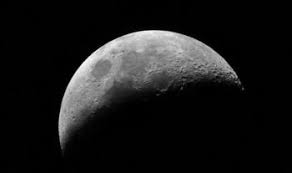
Breaking News
 LIVE ELECTION RESULTS: New York mayor, NJ & VA governor, Prop 50, Trump endorsements, latest vote
LIVE ELECTION RESULTS: New York mayor, NJ & VA governor, Prop 50, Trump endorsements, latest vote
 Sen. Markwayne Mullin Reveals Schumer Held Secret BACKROOM MEETING...
Sen. Markwayne Mullin Reveals Schumer Held Secret BACKROOM MEETING...
 RIP NYC - Muslim Communist Zohran Mamdani Wins New York City Mayoral Race
RIP NYC - Muslim Communist Zohran Mamdani Wins New York City Mayoral Race
 Dramatic Footage Shows UPS Cargo Jet Crashing At Louisville Airport
Dramatic Footage Shows UPS Cargo Jet Crashing At Louisville Airport
Top Tech News
 Japan just injected artificial blood into a human. No blood type needed. No refrigeration.
Japan just injected artificial blood into a human. No blood type needed. No refrigeration.
 The 6 Best LLM Tools To Run Models Locally
The 6 Best LLM Tools To Run Models Locally
 Testing My First Sodium-Ion Solar Battery
Testing My First Sodium-Ion Solar Battery
 A man once paralyzed from the waist down now stands on his own, not with machines or wires,...
A man once paralyzed from the waist down now stands on his own, not with machines or wires,...
 Review: Thumb-sized thermal camera turns your phone into a smart tool
Review: Thumb-sized thermal camera turns your phone into a smart tool
 Army To Bring Nuclear Microreactors To Its Bases By 2028
Army To Bring Nuclear Microreactors To Its Bases By 2028
 Nissan Says It's On Track For Solid-State Batteries That Double EV Range By 2028
Nissan Says It's On Track For Solid-State Batteries That Double EV Range By 2028
 Carbon based computers that run on iron
Carbon based computers that run on iron
 Russia flies strategic cruise missile propelled by a nuclear engine
Russia flies strategic cruise missile propelled by a nuclear engine
 100% Free AC & Heat from SOLAR! Airspool Mini Split AC from Santan Solar | Unboxing & Install
100% Free AC & Heat from SOLAR! Airspool Mini Split AC from Santan Solar | Unboxing & Install
China Preps for Launch of Historic Mission to Moon's Far Side on Friday

China is getting set to launch the first-ever surface mission to the moon's far side.
The robotic Chang'e 4 mission is scheduled to launch atop a Long March 3B rocket on Friday (Dec. 7) at around 1:30 p.m. EST (1830 GMT; 2:30 a.m. on Dec. 8 local China time).
If all goes according to plan, Chang'e 4's lander-rover duo will touch down within the moon's South Pole?Aitken (SPA) basin after a 27-day flight, then study both the surface and subsurface of this region. [China's Moon Missions Explained (Infographic)]
Both the lander and the rover were designed as backups for China's successful Chang'e 3 mission, which put a lander and a rover named Yutu down on the moon in December 2013.
As a prelude to the Chang'e 4, China launched the Queqiao relay satellite this past May. Queqiao is now positioned at the Earth-moon L2 Lagrange point — a place where the spacecraft can handle communications between ground controllers and the lander-rover mission on the far side.
China's Yutu moon rover, photographed on the lunar surface by the Chang'e 3 lander on Dec. 16, 2013. The Chang'e 4 mission to the lunar far side, which is scheduled to launch on Dec. 7, 2018, was designed as a backup for Chang'e 3.
Credit: CASC/China Ministry of Defense
Lots of scientific gear
Chang'e 4 is expected to touch down in Von Kármán Crater, within the SPA basin.
In a study published last month, Yingzhuo Jia, of the University of Chinese Academy of Sciences, and colleagues laid out the mission's chief scientific objectives. (Jia is also with the State Key Laboratory of Space Weather, National Space Science Center of the Chinese Academy of Sciences.)




